|
|
|
Notestein's Nursery
3701 NW 17th Street Premium Quality Peace GardensFostering PeaceOne Plant at a Time A Reprint from Call for
|
|
|
|
Recommended Reading
These are the books we at Southern Gardening and Notestein's Nursery use on a daily basis to guide our own gardening practices and the advice we offer.
NEW!
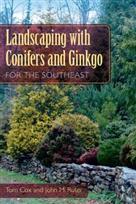
- "Landscaping with Conifers and Ginkgo for the Southeast is a welcome and well researched reference. It's been long needed by plant folks who've largely written off conifers in landscaping, a large number of which aren't adapted to the Southeast's high heat and humidity.
The reader will gain a new appreciation for and learn fascinating facts about the Ginko Biloba, a living fossil. It's a unique species recognizably similar to fossils dating back 270 million years.
But the primary purpose of Landscaping with Conifers and Ginkgo for the
Southeast is to provides the single, most authoritative source of information on conifer adaptability for the Southeast. With well written text and many previously unpublished photos, experience for yourself how well it succeeds."
Richard S. George, Macon, Ga.
Senior Master Gardener
Florida Wild Flowers and Roadside Plants,
by C. Ritchie
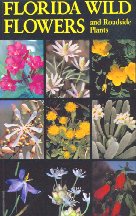 Bell & Bryan J. Taylor. Laurel Hill Press, Chapel Hill. 1982.
Bell & Bryan J. Taylor. Laurel Hill Press, Chapel Hill. 1982.
- Identification guide to 500 wild (not necessarily native) flowers.
Excellent photos & descriptions of habitat make this book useful when
selecting native plants and deciding where to plant them.
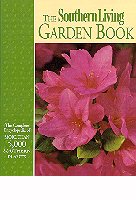 The Southern Living Garden Book,
edited by Steve Bender. Oxmoor House, Birmingham, AL. 1998.
The Southern Living Garden Book,
edited by Steve Bender. Oxmoor House, Birmingham, AL. 1998.
- A must-have for every southern gardener: 500 pages, 5000 plants, hundreds of illustrations
and photos, dozens of indispensible lists. If you buy only one gardening book, get this one.
 Southern Living Garden Problem Solver,
edited by Steve Bender. Oxmoor House, Birmingham, AL. 1999.
Southern Living Garden Problem Solver,
edited by Steve Bender. Oxmoor House, Birmingham, AL. 1999.
- Companion to the Garden Book. Heavily illustrated. Covers prevention and treatment;
critters, diseases, and other damage; problems of specific plants.
 The Southern Gardener's Book of Lists,
by Lois Trigg Chaplin. Taylor Publishing Company, Dallas. 1994.
The Southern Gardener's Book of Lists,
by Lois Trigg Chaplin. Taylor Publishing Company, Dallas. 1994.
- Over 150 pages of lists with titles like "the most cold-hardy palms," "perennials that can take sun
all day," "groundcovers for deep shade," "low shrubs that won't hide windows," "super easy flowers from
a packet of seeds," and lots, lots more.
 Florida's Fabulous Butterflies, by Thomas C. Emmel (photography by Brian Kenney). World
Publications, Singapore. 1997,
Florida's Fabulous Butterflies, by Thomas C. Emmel (photography by Brian Kenney). World
Publications, Singapore. 1997,
- 100 oversized pages filled with gorgeous photos and useful information on more than 100
species of butterflies and moths found in Florida. Especially valuable in helping to
distinguish look-alike species, such as monarchs and viceroys.
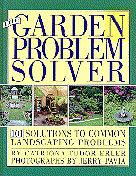 The Garden Problem Solver, by Catriona Tudor Erler (photographs by Jerry Pavia).
Simon & Schuster, NY. 1994,
The Garden Problem Solver, by Catriona Tudor Erler (photographs by Jerry Pavia).
Simon & Schuster, NY. 1994,
- Subtitled "101 solutions to common landscaping problems," like lack of water, too much water, too much shade,
an unsightly view, a steep slope. You'll wish you had even more problems to try these solutions on.
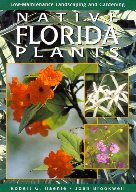 Native Florida Plants, by Robert G. Haehle & Joan Brookwell. Gulf Publishing Co., Houston. 1999.
Native Florida Plants, by Robert G. Haehle & Joan Brookwell. Gulf Publishing Co., Houston. 1999.
- A lot of books help you identify Florida's native plants; this book actually tells you how to grow them.
Covers about 300 species. Another must-have for the Florida gardener.
 Gardening for Dummies, by Michael MacCaskey & the Editors of the National Gardening Association.
IDG Books Worldwide, Inc., Foster City, CA.
Gardening for Dummies, by Michael MacCaskey & the Editors of the National Gardening Association.
IDG Books Worldwide, Inc., Foster City, CA.
- Offers the most bang for the buck for first-time gardeners. Strong on basics, but a little
thin on regional details.
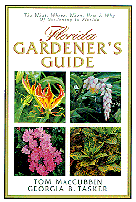 Florida Gardener's Guide, by Tom MacCubbin and Georgia B. Tasker.
Cool Springs Press, Inc., Franklin, TN.
Florida Gardener's Guide, by Tom MacCubbin and Georgia B. Tasker.
Cool Springs Press, Inc., Franklin, TN.
- A color photo and two pages of detailed advice and information on over 200 species, by two of
Florida's best-known garden writers.
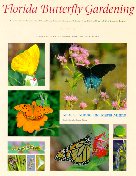 Florida Butterfly Gardening, by Marc C. & Maria Minno.
University Press of Florida, Gainesville. 1999.
Florida Butterfly Gardening, by Marc C. & Maria Minno.
University Press of Florida, Gainesville. 1999.
- Beautiful, comprehensive, indispensible. There's no other gardening book like it. Buy it for
yourself and give one to everyone you know who loves the beauty of nature.
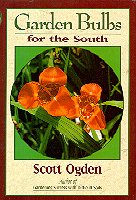 Garden Bulbs for the South, by Scott Ogden.
Taylor Publishing Co., Dallas. 1994.
Garden Bulbs for the South, by Scott Ogden.
Taylor Publishing Co., Dallas. 1994.
- Excellent reference work. Practical suggestions to help you be more successful
with over 200 bulbs that belong to the South — along with information on suitable
companion plants and an exhaustive sources listing.
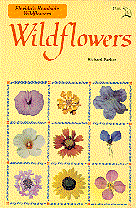 [Florida's Roadside] Wildflowers, by Richard Parker. Windward Publishing Co., Miami. 1986.
[Florida's Roadside] Wildflowers, by Richard Parker. Windward Publishing Co., Miami. 1986.
- A useful little handbook with photos and identifying information on over 200 species of wildflowers,
grouped by flower color, that can be found in Florida.
 Vegetable Gardening in Florida, by James M. Stephens.
University Press of Florida, Gainesville. 1999.
Vegetable Gardening in Florida, by James M. Stephens.
University Press of Florida, Gainesville. 1999.
- Stephens is the Florida Extension Service's leading authority on vegetable gardening, and
this book assembles more practical information on its subject than any other.
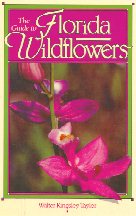 The Guide to Florida Wildflowers, by Walter Kingsley Taylor.
Taylor Publishing Co., Dallas 1992.
The Guide to Florida Wildflowers, by Walter Kingsley Taylor.
Taylor Publishing Co., Dallas 1992.
- The definitive field guide to over 500 Florida wildflowers, grouped by flower color to aid
identification. Excellent photos of key characteristics. Includes many "weeds."
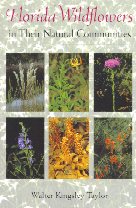 Florida Wildflowers in Their Natural Communities, by Walter Kingsley Taylor.
University Press of Florida, Gainesville. 1999.
Florida Wildflowers in Their Natural Communities, by Walter Kingsley Taylor.
University Press of Florida, Gainesville. 1999.
- Simply the best volume on Florida wildflowers available. Photos, descriptions and
commentary on over 450 species. Unique and valuable because it groups plants by their
native habitats.
 Gardening with Native Plants of the South, by Sally and Andy Wasowski.
Taylor Publishing Co., Dallas. 1994.
Gardening with Native Plants of the South, by Sally and Andy Wasowski.
Taylor Publishing Co., Dallas. 1994.
- A must-have for anyone interested in going native. Covers more than 200
native plants, from large trees to groundcovers, and how to use them effectively
in your landscape.
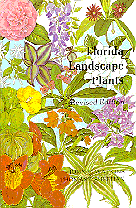 Florida Landscape Plants, by John V. Watkins and Thomas J. Sheehan. University Presses of
Florida, Gainesville. Rev. ed. 1975. $15.95
Florida Landscape Plants, by John V. Watkins and Thomas J. Sheehan. University Presses of
Florida, Gainesville. Rev. ed. 1975. $15.95
- THE standard reference for students, nursery workers, and gardeners in the Deep South. Detailed
information on over 400 species of Florida's most popular ornamental plants.
